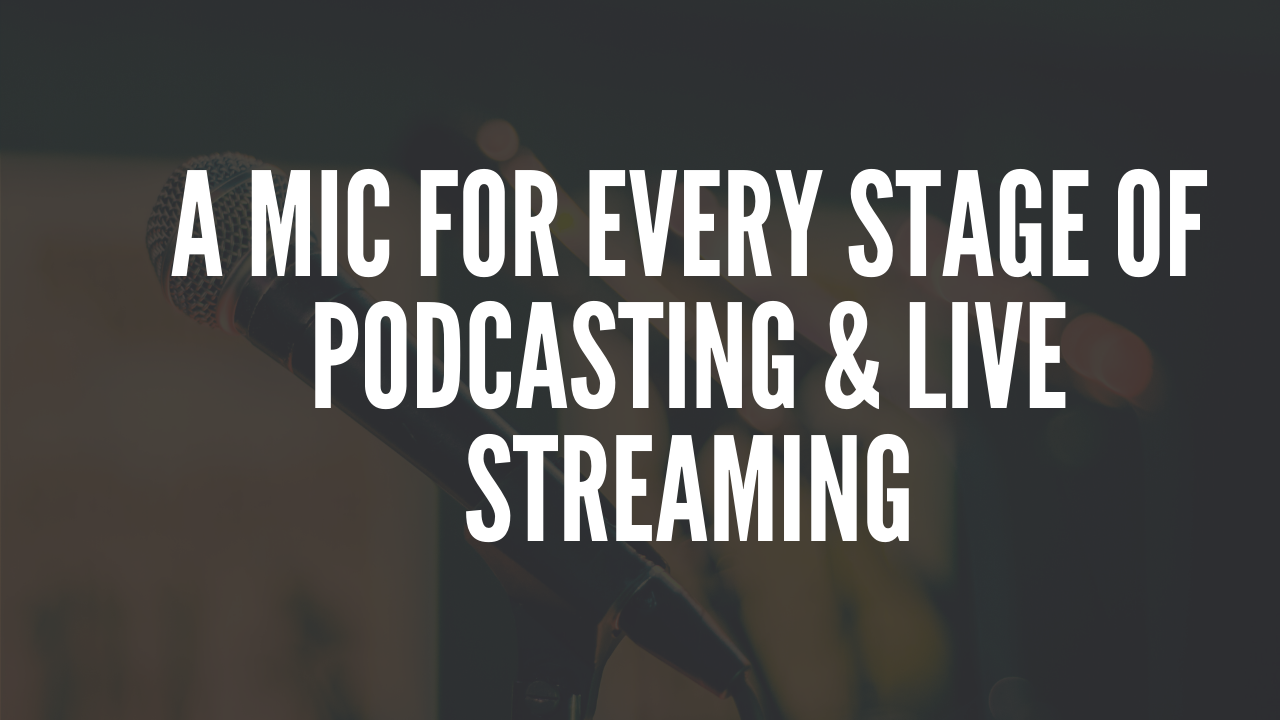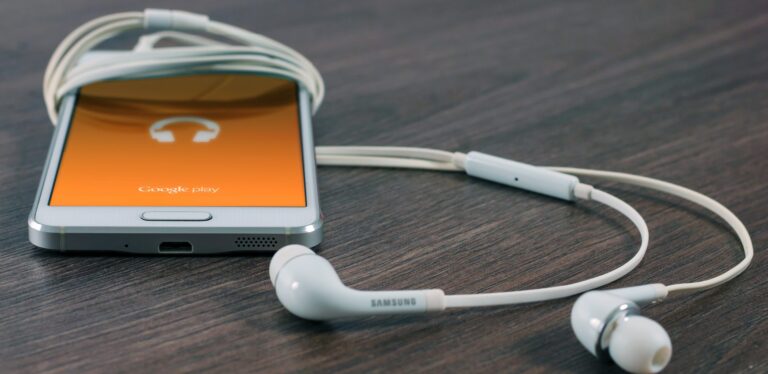A Mic For Every Stage Of Podcasting & Live Streaming
Recently I wrote about how to host a webinar or live stream, which entry level gear. But after my friend Rian reached out to me, I realized I don’t have a single resources with gear for every level. While my gift guide for podcasters has a lot of that info, it’s not super clear and has a lot of other stuff. In this post, I’ll give you a few options for a mic at every level.

Beginners’ Mics ($100 or less)
This is the category I tend to write about the most because I help people start podcasts. But I would say you’re looking for a beginner mic if you want something simple that sounds better than the built-in mic, without breaking the bank.
ATR-2100 is what I recommend the most. It’s small, light, and easy to set up.Blue Yeti is a popular option for a lot of people. You have some control over how much sound the mic takes in, which can be helpful…but it’s also been known to be a pitfall for people who don’t know about these settings.- The Blue Snowball is an often recommended cheaper alternative to the Yeti. Fewer settings, still sounds pretty good!
Intermediate / Upgrade Mics ($100 – 300)
When you’re ready to move beyond the beginner mic you picked up, there are a few options for you to consider. Most of these will be XLR microphones, which means that have the 3-pin hole to plug-in to. As a result, you’ll need to extra pieces of gear:
- An interface to plug the mic into your computer I recommend the Focusrite Scarlet Solo (or 2i2 if you want more than one input).
- An XLR Cable. Quality matters here because a bad cable will generate a buzz or ground noise. For most people, the Cable Matters cables are great. If you want the best, many give that title to Mogami.
As a quick note, you’d want an XLR mic with an interface because it gives you more control over the sound coming into the computer. You should, in most cases, get a more accurate representation of your voice, and you can make tweaks more easily on an interface.
OK…now onto the recommended mics.
- The Rode Podcaster is an excellent upgrade pic that also happens to be a USB mic, so no extra gear required.
The Rod Podmic is a $100 XLR options and my recommendation for entry XLR mic. It’s designed specifically for voice and sounds fantastic without having to do anything to it.- The Rode Procaster is an XLR version of the Podcaster, so it will have a similar sound + all the benefits I mentioned above.

Learn how podcast pros produce their shows…
…and how you can improve yours.
One breakdown, delivered to your inbox weekly.
Learn the tools and processes used by top podcasters and reclaim hours of your life every week.
Advanced Mics ($350 – $500)
There’s one more level I want to touch on before the “professional” mics, because honestly if you’re at that level, you probably know exactly what you need. These mics (all XLR) are crafted to provide specific functionality depending on the use. Some mics, for example, are made for singing – some specifically for Bass vs. Soprano. Some mics are specifically for voice overs.
These recommendations are on the higher end but are designed for podcasters and VO. That said, if you’re going to get a mic in this price range, you should try some out to see what works best with your voice.
- Shure SM7B: This is my mic, and a favorite among podcasters. It’s a classic broacasting mic, and has a built in shock mount (so it doesn’t pick up sounds and shakes when you hit your desk) and a built-in pop filter so soften those hard P and B sounds. It is a hungry mic, so you’ll need an extra power boost, which you can get with the CloudLifter CL1.
- Heil PR-40: This is another common podcasting mic at the high level because it sounds great and it pretty forgiving of environment and mic technique.
- Electro Voice RE-20: The Shure SM7B is one mic you’ll often see in TV shows when people are broadcasting. The other one is this – the Electro Voice RE-20. It gives you some rich sounds and more depth for some people. It’s also got a built-in shock mount and pop filter, and is very forgiving of bad technique.
Here, you’ll also probably want a better interface. I have the UA Arrow. It’s fantastic, powerful, and has a very small footprint.
The PRO Pro Mics
Like I said earlier, once you get to this level, you probably know exactly what mic you need for your specific voice. BUT you also probably have a mixer, or a studio area. If you’re curious though, you can always check out what Neumann mics are out there.
Looking for Something for your Phone?
If you’re looking to improve recording directly to your phone, there are a few decent options out there:
- Shure MV88 (iOS only)
- Rode Lav GO







